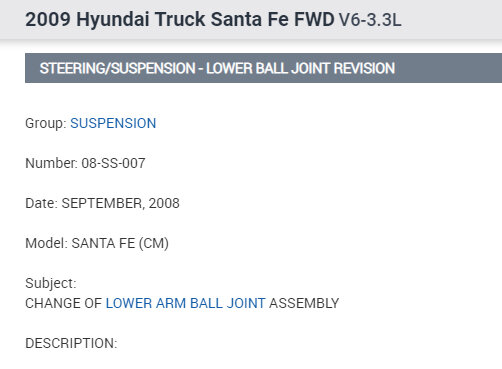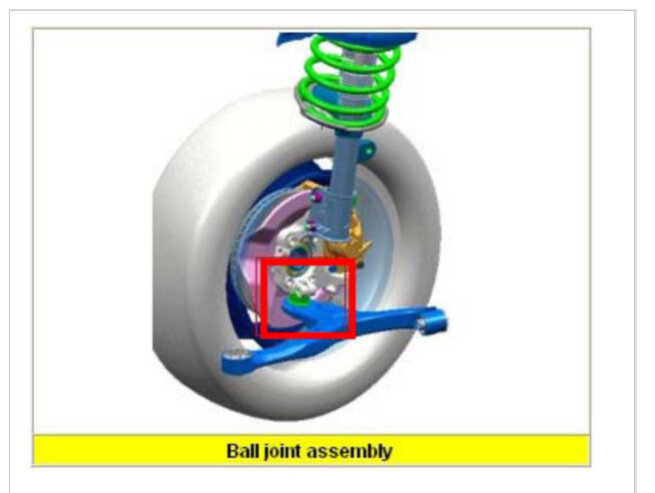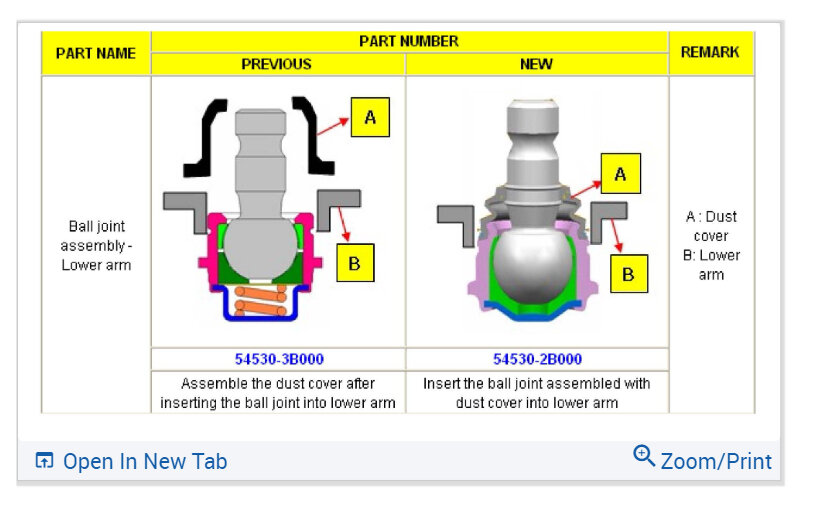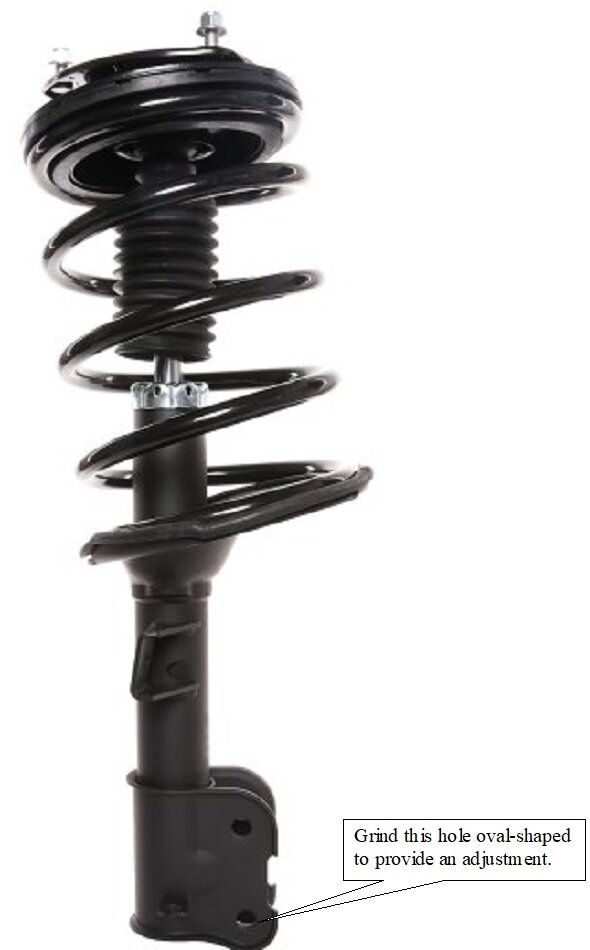Most of the symptoms you described are related to the alignment of the front wheels. Due to the style of the lower ball joints, an alignment should not have been needed when they were replaced, so it's likely the rattle is being caused by a worn part that is allowing something else to change. You'll need to visit a tire and alignment shop to have the steering and suspension systems inspected. They will also "read" the tire wear patterns.
You can start by checking out this article:
https://www.2carpros.com/articles/how-car-tires-work
There's two things that can cause the type of wear you described. The first is a "camber" problem. If you stand in front or in back of the car and look at the front wheel, camber is the inward or outward tilt of the wheel on top. A little positive camber is normal for most cars, meaning the wheel is tipped out on top, but usually not enough to see by eye. One important point about camber is that tire will want to roll in the direction it's leaning. Besides setting both front wheels to specs, it's important it be the same on both sides so the two pulls offset each other, then, we make the left wheel just a fuzz higher than the right to offset the effects of "road crown". That's the slant to the right of the road surface so water runs off.
The second important point is excessive camber causes rapid wear on one edge of that tire's tread. Camber wear always affects just that one tire that's misadjusted, but it's common to find camber misadjusted on both wheels. The two camber pulls can be excessive and cause miserable tire wear, but as long as they're both equal, that aspect of the alignment will cause the car to go straight when you let go of the steering wheel. (This has nothing to do with an off-center steering wheel).
It's when camber is not equal on both sides that one tire's pull will not be strong enough to offset the other tire's pull, then the car will pull in the direction of the higher camber. Here's a major point of confusion. You may have to turn the steering wheel to one side to counteract that pull, but that is not considered an off-center steering wheel. If the steering wheel is straight when you let go of it at higher speeds, it's the camber pull you're counteracting. Since you noticed rapid wear on the inner edges of the tires, if camber is the cause, the tire(s) with that wear is tipped in too far on top. Your car model uses a common strut design with two bolts on the bottom. With Chrysler products, you loosen the bolts, then rotate one of them or just shove the wheel in or out to set it to specs. With GM products and with your model, the first time camber needs to be adjusted, the lower hole has to be ground into an oval to allow that adjustment to be made. Three things can cause camber to need to be readjusted. When repairing crash damage, metal fatigue on older / rusty bodies, and sagged suspension ride height. All alignment specialists measure ride height first because if it's too low, you'll still have bad tire wear even when the alignment numbers look perfect. Sagged ride height is a factor of age, not mileage. It's corrected with new coil springs. To save you time and money, mechanics will often sell you a complete strut assembly as shown in this photo. You get new coil springs as part of the package. You'll pay a little more since you're getting more parts, but you'll more than make that up in the greatly reduced labor time. The vehicle must be aligned when struts are replaced, to set camber back to specs.
The second alignment angle is "toe". That's the direction the wheels are steering when the steering wheel is straight ahead. Unless this adjustment is real bad, it's harder to see because you'd have to look down through the hood to see the wheels. Unlike camber that affects just that one tire, toe always affects both tires very close to equally. That's because it's the total of both wheels that determines how much the adjustment is off.
First, to look at the steering wheel, imagine the alignment is perfect and the steering wheel is straight. Now, if you adjust the left wheel so it's steering a lot to the left, then adjust the right wheel so it is also steering to the left an equal amount. both individual toe readings would be wrong, but the "total toe" will have not changed. To drive the vehicle, you would have to turn the steering wheel to the right to bring both front wheels back to where the car goes straight down the road. Tire wear would not be adversely affected. The only symptom would be a steering wheel off-center to the right. When you let go of it, the vehicle will still go straight. That is very different, but confusing, from a steering wheel that's off-center because you're pulling it that way to make the car go straight.
Instead of toe being off on both wheels, suppose just the left wheel is steering to the left too much, and the right one is adjusted perfectly to specs. The car can't follow both wheels when they're steering in different directions. As a general rule, the vehicle will often split the difference and steer a little to the left. Again, you have to counteract this by turning the steering wheel to the right.
This is where many people get confused. Once you've turned the steering wheel to make the vehicle go straight, both tires are steering away from the center of the car. Often the car will follow the tire with the most weight on it which is the right one due to road crown, but since total toe is incorrect, both tires will have the same bad tire wear. It doesn't matter if toe is off on the left wheel, the right wheel, or both, incorrect total toe wear always affects both wheels very nearly equally.
To help visualize toe wear, I need to exaggerate it for clarity. Imagine both front wheels are turned away from the vehicle's center. The left one is steering to the left and the right one is steering to the right, . . . a lot. Now imagine turning the wheels more, and more, . . and more, until they're both steering to the side of the vehicle. Now it's easy to visualize the inside edges of the tread are the first part of the tires to come down the road. We call that the "leading edge". Now imagine holding a pencil upright so the eraser is touching a tabletop. Push down on it, then drag it across the table. You'll see the leading edge scrub off eraser crumbs while the trailing edge bends and lifts up off the table. This is what happens to both tires. The leading edges wear off real fast, as you found, while the trailing, or outer edges show relatively little wear. If it's bad enough, this wear also shows up as a choppy pattern on both tires. That chopping, or scalloping, is always caused by toe wear, never by camber wear.
A worn tie rod end, which is part of the steering linkage connecting both front wheels could allow one wheel to not be held in the straight-ahead position. That would make toe for that wheel incorrect, and it would make total toe incorrect. It's the total toe that causes the wear on both tires equally, and it's the unequal toe readings on the two wheels that causes an off-center steering wheel.
There can be other parts causing the rattle that have nothing to do with the alignment. Common items are missing anti-rattle hardware for a brake caliper, and broken or worn anti-sway bar links or bushings. Those parts are more of an irritation, and not so much of a safety concern, but you'll find that out with the inspection. When the rattle is caused by something that affects the alignment, tire wear and off-center steering wheel in this case, it's common to feel that rattle in the steering wheel. Less common is to feel it in the floor.
Let me know what is found during the inspection. If the vehicle is aligned, all alignment computers can make a printout that shows the "before" and "after readings. They take the "before" readings automatically to show what the car came in with before anything was adjusted, but after any parts were replaced. The "after" readings are the final numbers just before the vehicle is taken on the final test drive. If you post the numbers for "caster", "camber", and "toe", I can interpret them for you and relate them to the tire wear you found. I always kept a copy of the printout for myself, and I put one on the passenger front seat for the car owner. You may have to ask ahead of time for a printout. Not all specialists provide them, believe it or not, because the special pre-printed paper forms are rather expensive.
Image (Click to make bigger)
Thursday, December 1st, 2022 AT 8:37 PM







